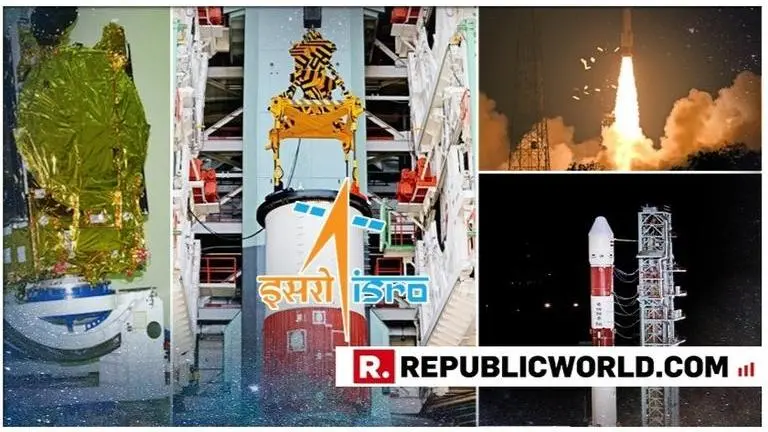Updated 13 June 2019 at 23:02 IST
ISRO plans its own space station: Here's why its recent achievements give it every right to aim for the stars
The Indian Space Research Organization (ISRO) is planning to launch its own space station, said K Sivan, Director of ISRO, at a joint briefing with MoS PMO Dr Jitendra Singh on Thursday, adding that it would be an extension of Gaganyaan - India's first indigenous manned mission to space which is planned to launch in 2022.
- India News
- 0 min read

The Indian Space Research Organization (ISRO) is planning to launch its own space station, said K Sivan, Director of ISRO, at a joint briefing with MoS PMO Dr Jitendra Singh on Thursday, adding that it would be an extension of Gaganyaan - India's first indigenous manned mission to space which is planned to launch in 2022.
With this massive pronouncement and the increase in ambition it entails, ISRO is surging forward by leaps and bounds.
Here are some of its recent achievements:
- Mars Orbiter Mission (MOM): Also known as Mangalyaan, was India's first interplanetary mission. The launch was successful as India's spacecraft is the first one to enter the Martian orbit in its first attempt. MOM entered the Martian orbit on 24th September 2014.
- GSLV Mk-III: The GSLV Mk-III was ISRO's heaviest rocket which launched on December 18, 2014, from Sriharikota. It was designed to make ISRO fully independent in launching heavier communication satellites of INSAT-4 class, which weigh around 4,500 to 5,000 kg.
- Astrostat: India's first dedicated multi-wavelength space observatory was launched from a PSLV-C30 rocket on September 28, 2015. This mission made India the fourth country in the world along with US, UK and Russia to launch such an observatory.
- GSAT-15: On November 11, 2015, ISRO launched a G-SAT 15 from an Ariane-5 rocket. This satellite became the country's latest communication satellite.
- PSLV-C28: In July 2015, ISRO's launch vehicle PSLV-C28 carried and launched five British satellites. The entire load was around 1,440 kg.
- IRNSS-1G: Also known as Navic, ISRO launched yet another satellite from the Indian Regional Navigation Satellite System (IRNSS). It entered orbit in April 2016.
- On February 15, 2017, ISRO made a record-breaking launch of 104 satellites from seven countries. The mission was carried out in a single launch.
- On 12th January 2018, ISRO launched the Polar Satellite Launch Vehicle (PSLV) which launched the 710 kg Cartosat-2 Series Remote Sensing Satellite along with 30 co-passenger satellites.
- In addition, the Chandrayaan-2 mission's rocket's Cryogenic engine was also tested on October 11, 2018.
- On November 14, 2018, the GSLV MkIII-D2 successfully launched GSAT-29
- The GSAT-7A was launched on December 19th 2018. The satellite launched from the Geosynchronous Satellite Launch Vehicle-F11 (GSLV-F11), the heaviest satellite being launched by GSLV with an indigenously developed cryogenic stage.
ISRO achievement list includes some of the most successful launches the world has seen.
Advertisement
On Thursday, ISRO Chief K Sivan said that the planned project will be an extension of the Gaganyaan Mission. Addressing the media, he added:
"We have to sustain the Gaganyaan program after the launch of (the) human space mission. In this context, India is planning to have its own space station,"
Advertisement
Dr. Jitendra Singh, the Union Minister of State for Atomic Energy and Space said efforts are on to carry out ISRO's first human mission into space before 2022:
"On eve of 75th Independence Anniversary of India in 2022, ISRO has resolved to send its first human mission into space, it could be done before 2022. An exclusive special cell has been created, Gaganyaan National advisory council to monitor planning and preparation," he said
Singh further added that India's second Moon mission Chandrayaan-2 will be launched on July 15 this year. The spacecraft is planned to make its soft landing on the moon on September 5 or the next day, which is 52 days after its launch.
In addition, Chandrayaan-2 will also venture and explore the region of the Moon where no one else has carried out a mission before. It will carry a composite body which is comprised of an orbiter, a lander, and a rover. The whole mass of Chandrayaan 2 amounts to 3.8 ton. The propeller itself weighs 1.3 ton.
(with inputs from GEOSPATIAL WORLD)
Published By : Shloak Prabhu
Published On: 13 June 2019 at 20:23 IST
